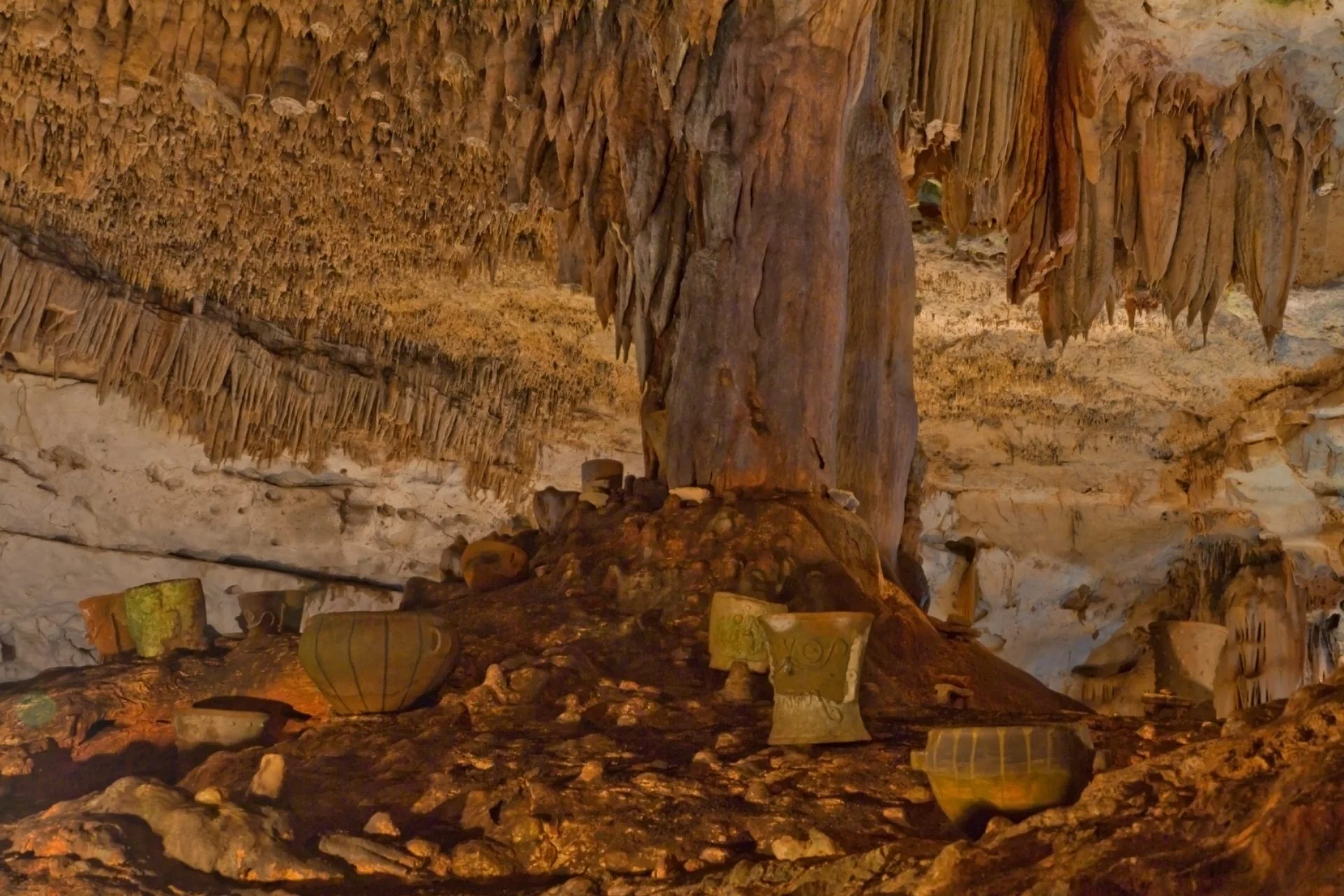Balankanche is a sacred cave used for rituals by the Maya, situated near the Maya-Toltec city of Chichén Itzá in the Yucatan, Mexico.
Worship at the cave extends to the Pre-Classic period, continuing into the late Post-Classic period until the Maya collapse.
The Maya believed that the universe was divided into the sky, the earth and the underworld, in which caves functioned as a portal or gateway to Xibalba, a subterranean realm ruled by the Maya death gods and their helpers.
Balankanche is one such venerated cave, in which the current accessible system stretches for around 1.2 miles in length through the soluble limestone rock. During the Terminal Classic period, the water table was at least six metres lower than today, allowing the Maya to venture further into the cave system to perform sacred rituals.
The Maya built a quadrangle of masonry structures around the cave entrance; however, these were demolished sometime during the 1950’s when they were bulldozed for road fill. The cave was also connected to Chichén Itzá by a sacbe, Yucatec Maya for “white road”, a raised paved road that was likely used as a sacred route for Maya pilgrims.

The cave was first explored by archaeologists in 1905, but the extent of Balankanche was first realised in 1959 when José Humberto Gómez discovered a series of passages sealed behind a blockage.
This led to a chamber called the Heathen alter of the Ceiba (World Tree), containing a limestone column formed by the fusion of a stalactite with a stalagmite resembling a large ceiba tree. Around the formation, the Maya left offerings of ceramic jars, stone tools, shells and miniature manos, metates, and spindle whorls.
Archaeologists believe that worship was associated with Chaac, the Maya rain god and a patron of agriculture. Chaac is normally depicted with a human body showing reptilian or amphibian scales, and with a non-human head that has evincing fangs and a long pendulous nose. He often carries a shield and a lightning axe, the axe being personified by a closely related deity, God K, also called Bolon Dzacab in Yucatec.
In the Post-Classic period, worship was associated with the Toltec counterpart, Tlaloc, a member of the pantheon of gods in Aztec religion who was the supreme god of rain, earthly fertility and water. Tlaloc is also associated with caves, springs, and mountains, most specifically the sacred mountain in which he was believed to reside.
Header Image Credit : Shutterstock





